The exhibition was featured on Contemporary Art Daily.
Margaret RaspéElemente
9 February — 13 April 2024
Elemente
Elemente
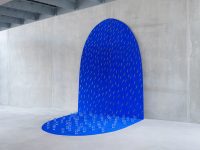


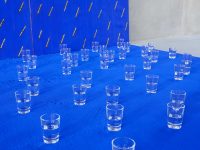



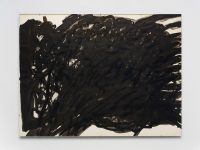
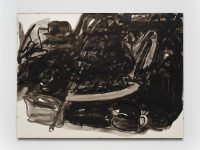





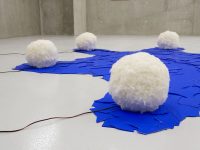

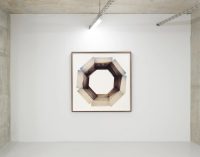



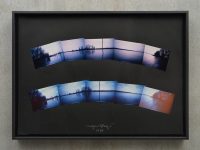
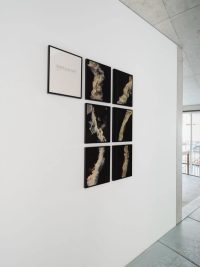
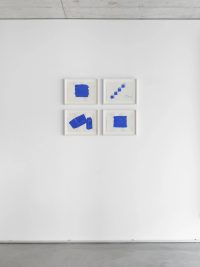
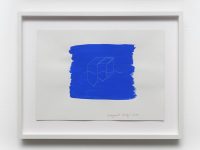
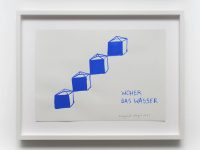
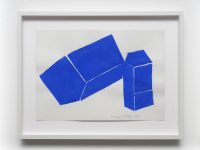
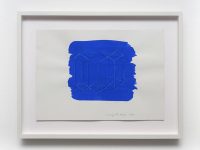
Download exhibition text as a PDF in English and German. For me, these are the same fundamental preoccupations with questions, both old and new, of our existence: what is a human – why are we here – what are our actions – what is nature – what does art and culture mean in our time of electronic media and globalization – how can I as an artist work for a new consciousness – what do we seem to know – what do we ignore? Can we only try things out, invent ourselves, and work to find ourselves in the time we are given, or is everything illusion, deception, a game?
— Margaret Raspé, Karpathos, 2003 Throughout her five-decade career, Margaret Raspé returned persistently to essential questions surrounding her own existence and that of the world around her. Such reflection pointed her towards a deep awareness of interconnectivity, which she aimed to convey through her work. Her installations, performances, photographs, paintings, and drawings function as vehicles to move the viewer towards such a consciousness, which melded the spiritual and political in a simple call to pay attention. Conceived in close collaboration with the artist before her recent death at the age of 90, Elemente is Raspé’s first solo gallery exhibition in Germany, following her highly-lauded and long-overdue retrospective at the Haus am Waldsee and Badischer Kunstverein last year. Elemente refers, on the one hand, to the four classical elements of the universe, which were touchstones for Raspé, as well as the elements that recur throughout her own practice—wool, water, ultramarine blue, Maria as a symbol and a word, overtone chanting, the horizon. Raspé animates associations between these materials and ideas, forming a syntax that is reconfigured with every work and renders each radically mutable and contingent. In Elemente, Raspé’s prescient ecological consciousness comes to the fore, particularly in her emphasis on polluted water as both a call to action and a symbol for the grave consequences of disregarding humanity’s interconnectedness with the environment. In her text Water is No Longer Water, which accompanied her 1990 performance in which she waded into the ink-black Bzura River in Łódź, Poland, Raspé wrote: “today we refer to the present — the past is stored in our genes — the future depends on decisions — which we make from our limited knowledge of this present, based on change that can only be imagined, which belongs to the vision of an open consciousness. We must take action from a place of unrepressed consciousness to form future realities.” Such was the mentality that motivated her work, as she challenged linearity to think cyclically and across systems: her installations, performances or photographs like dispatches of this consciousness she was bent on raising. While the activism undergirding the performance in Łódź, as well as the wool installation in the Enza River in Reggio Emilia, Italy that preceded it in 1989, is more explicit, Raspé’s reflection on water as a medium to broach interdependence and connectivity also extended to her more abstract installations, drawings and photographic works exhibited here. One can imagine her process as a kind of circumambulation, encircling these ideas on both a physical and mental plane in an approach akin to moving around a sacred idol. This circularity is particularly evident in her Augenhöhe, 1988 (Eye Level) series—in which she turned on her own axis to document the panorama of landscapes like the nuclear power plant and tar fields of Brockdorf, or the marshlands of Wewelsfleth. In Schwarze Kanäle, 1983 (Black Channels), a selection of which are presented in Elemente, she replays a flurry of rippling black strokes in a series of thirty compositions compositions, while Kontinuum II (1995), consists of an island of blue shattered glass populated by six wool balls which she likened to celestial bodies. Raspé’s overtone singing over recordings of the sound made by the turning frequencies of Earth, Sun, Moon, Jupiter, Venus, Mars adjusted to the octave of human perception emanates from these wool spheres. In her Marientafel, 1992 (Maria’s Table), strips of silver emblazoned with the many names of Maria against an altar-like oval resemble raindrops caught in the dozens of water cups that populate the half-oval that stretches as if reflected on to the floor. Maria of the Heavens, Maria of the Sea, Maria of the Fire, Maria of the Earth. While the silver pieces have oxidized black with time—a change that Raspé welcomed as part of the work—in their original gleam they created after-images, underscoring Raspé’s interest in probing the boundaries of perception. This major painting, as well as the web of works that comprise Elemente, operate like a nexus of a complex array of references, while maintaining a strange and striking immediacy. As the concerns that drove Raspé remain startlingly urgent, her work takes on renewed relevance. We are proud to present her first posthumous exhibition, which offers just a glimpse of her relentless commitment to "try things out, invent ourselves, and work to find ourselves in the time we are given."